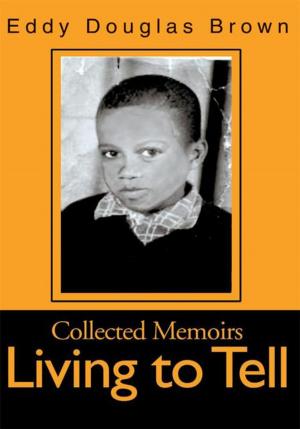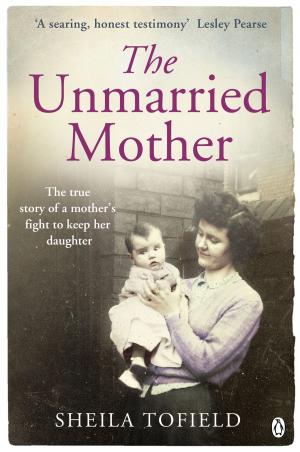Stereo Types/How a Black Family and its Blond Homeboys Blended Their Hopes in 1950s Portland
Nonfiction, Family & Relationships, Parenting, Prejudice| Author: | Colin Seymour | ISBN: | 9781301105717 |
| Publisher: | Colin Seymour | Publication: | June 19, 2013 |
| Imprint: | Smashwords Edition | Language: | English |
| Author: | Colin Seymour |
| ISBN: | 9781301105717 |
| Publisher: | Colin Seymour |
| Publication: | June 19, 2013 |
| Imprint: | Smashwords Edition |
| Language: | English |
Nearly 50 years after “Black Like Me,’’ few if any white authors have generated similar impact writing about American racial relations. But “Stereo Types,” the story of two preschool white boys who lived in a lower-class Negro household for three years in the 1950s, is that kind of book.
This story about black people who were among the thousands who moved to Portland, Ore., to build ships there during World War II could have been a landmark in Portland’s racial history -- even without the caucasian child-care clients.
“Stereo Types” is not, however, a historical document, although the black family, the Allens, was teeming with promising young adults who were coming of age during the Civil Rights movement. Daniel and Pearl Allen, who met in 1907 at a one-room school in central Texas, produced 15 children from 1917 to 1943, and 12 of them were alive in 1990, as were both parents. By the 21st century there were more than 300 descendants.
Thus “Stereo Types” serves as the definitive Allen family history despite being primarily a memoir about the two white boys, known to the Allens as Kim and Leif.
By 1954, Mama’s life centers upon her three provocative and willful grown daughters -- Ozell, Joyce and Billie Jean -- as well as her four sons still at home.
The oldest of those four are Lloyd, the 12th offspring, already a rhythm ’n’ blues star in Portland at 17 as Kim and Leif began spending weekdays and weeknights with the Allens, in close quarters with the youngest boys, serious L.C., formidable Jerry and the trouble-loving Marvin.
When 3-year-old Kim, who can barely talk, demonstrates a strong musical ear, Lloyd becomes his first mentor, and some of that impact endures long past Kim and Leif’s departure from the Allens at the end of 1956.
It even endures past 1962, when Lloyd shoots and kills a nightclub owner after being fired from a downtown gig because of tardiness. Kim’s steadfastness from afar on Lloyd’s behalf becomes the starting point for the author’s voice in the memoir.
The author’s voice had a decidedly Negro accent when he learned to talk, but the cultural shock value of the 1950s child-care arrangement has dissipated by the time he becomes a seasoned journalist and reconnects with the Allens.
That time lag, however, enables him to assess the benefits of America’s black-white dichotomy with new understanding.
The first third of “Stereo Types” portrays life with the Allens in Portland and explains how Kim and Leif’s iconoclastic parents arranged such an eye-opening childhood for their two sons.
The second third is about Kim and Leif’s increasing disconnection from black people in the tumultuous 1960s and 1970s as they grow up in a virtually all-white small town and then find themselves upwardly mobile during the years that the Allen men are declining, Lloyd and Jerry both with prison records.
The final third is about reconnecting with the Allens in the 1980s -- in time to see how Reaganomics and social ills have taken a toll on collective spirits -- but also in time for the interaction to fill a lot of holes in the two families’ lives.
The storyline’s demands on Lloyd as a role model and mentor create the conflict that drives the narrative.
The narrative is idyllic in the 1950s segment but cynical and hardened by the 1980s, to the point that Papa Allen’s funeral in 1990 becomes a judgment day for his wayward sons instead of for him.
But Lloyd lives on. In the book’s epilogue, it’s plain that his influence and that of his family also lives on, an ending decidedly upbeat.
“Black Like Me,” in which a white man passes for black, was about the distance between white and black America. “Stereo Types” is about the proximity.
“My brother and I were fortunate to be involved so intimately in the history of Black America in the second half of the 20th century,” the author says, “to feel that history in a way that few white Americans did or could.”
Nearly 50 years after “Black Like Me,’’ few if any white authors have generated similar impact writing about American racial relations. But “Stereo Types,” the story of two preschool white boys who lived in a lower-class Negro household for three years in the 1950s, is that kind of book.
This story about black people who were among the thousands who moved to Portland, Ore., to build ships there during World War II could have been a landmark in Portland’s racial history -- even without the caucasian child-care clients.
“Stereo Types” is not, however, a historical document, although the black family, the Allens, was teeming with promising young adults who were coming of age during the Civil Rights movement. Daniel and Pearl Allen, who met in 1907 at a one-room school in central Texas, produced 15 children from 1917 to 1943, and 12 of them were alive in 1990, as were both parents. By the 21st century there were more than 300 descendants.
Thus “Stereo Types” serves as the definitive Allen family history despite being primarily a memoir about the two white boys, known to the Allens as Kim and Leif.
By 1954, Mama’s life centers upon her three provocative and willful grown daughters -- Ozell, Joyce and Billie Jean -- as well as her four sons still at home.
The oldest of those four are Lloyd, the 12th offspring, already a rhythm ’n’ blues star in Portland at 17 as Kim and Leif began spending weekdays and weeknights with the Allens, in close quarters with the youngest boys, serious L.C., formidable Jerry and the trouble-loving Marvin.
When 3-year-old Kim, who can barely talk, demonstrates a strong musical ear, Lloyd becomes his first mentor, and some of that impact endures long past Kim and Leif’s departure from the Allens at the end of 1956.
It even endures past 1962, when Lloyd shoots and kills a nightclub owner after being fired from a downtown gig because of tardiness. Kim’s steadfastness from afar on Lloyd’s behalf becomes the starting point for the author’s voice in the memoir.
The author’s voice had a decidedly Negro accent when he learned to talk, but the cultural shock value of the 1950s child-care arrangement has dissipated by the time he becomes a seasoned journalist and reconnects with the Allens.
That time lag, however, enables him to assess the benefits of America’s black-white dichotomy with new understanding.
The first third of “Stereo Types” portrays life with the Allens in Portland and explains how Kim and Leif’s iconoclastic parents arranged such an eye-opening childhood for their two sons.
The second third is about Kim and Leif’s increasing disconnection from black people in the tumultuous 1960s and 1970s as they grow up in a virtually all-white small town and then find themselves upwardly mobile during the years that the Allen men are declining, Lloyd and Jerry both with prison records.
The final third is about reconnecting with the Allens in the 1980s -- in time to see how Reaganomics and social ills have taken a toll on collective spirits -- but also in time for the interaction to fill a lot of holes in the two families’ lives.
The storyline’s demands on Lloyd as a role model and mentor create the conflict that drives the narrative.
The narrative is idyllic in the 1950s segment but cynical and hardened by the 1980s, to the point that Papa Allen’s funeral in 1990 becomes a judgment day for his wayward sons instead of for him.
But Lloyd lives on. In the book’s epilogue, it’s plain that his influence and that of his family also lives on, an ending decidedly upbeat.
“Black Like Me,” in which a white man passes for black, was about the distance between white and black America. “Stereo Types” is about the proximity.
“My brother and I were fortunate to be involved so intimately in the history of Black America in the second half of the 20th century,” the author says, “to feel that history in a way that few white Americans did or could.”















